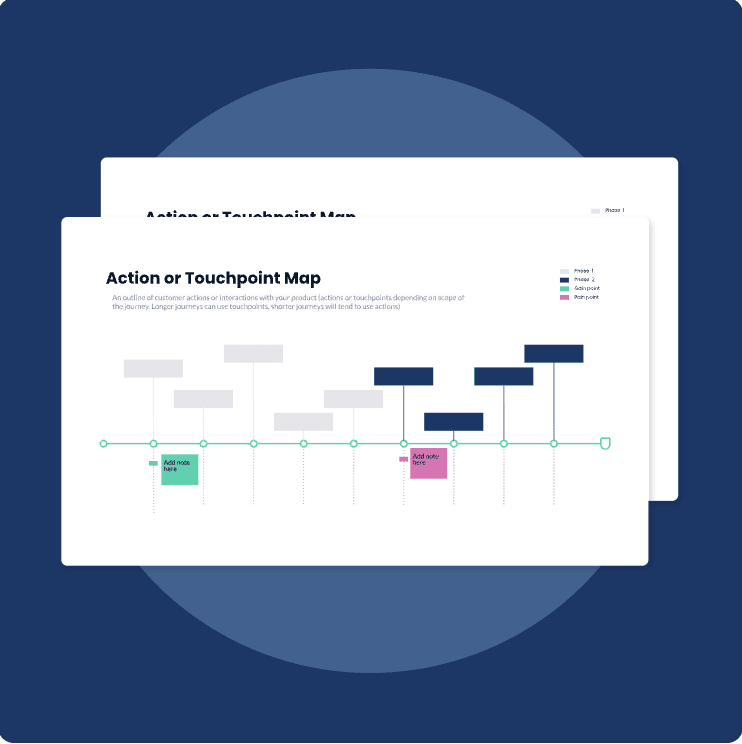Updated: May 6, 2024- 10 min read
In organizational assets, while most companies rightfully value their workforce as their greatest asset, data is another crucial yet often undermanaged resource. The value of data is soaring, as the non-data segments of businesses are increasingly becoming commoditized. This leaves minimal room for differentiation and poses challenges to growth, expansion, and competitiveness.
The real game-changer lies in what your business can generate from its data. Unlike other aspects of your business, the potential of your data to scale is immense and unique.
Future proof your team and discover how we can help you build Product excellence in your organization
However, a common challenge many product leaders face is extracting true value from your data. The reason? It's not being managed effectively. For your organization to reap the benefits of the data you collect, it needs to be managed as a product.
Managing your data properly
Data as a product must be usable, discoverable, addressable, and trustworthy. This means being crystal clear about the entities your data product encapsulates and ensuring it remains clean, integrated, and consistently updated. Neglecting this turns your data into a liability - dirty, incomplete, and outdated, leading to inaccurate insights and poor decision-making.
To manage data effectively, it requires dedicated ownership and accountability for specific data domains. Your organization must pivot to think and act differently, viewing data not just as a resource but as a product that demands continuous nurturing, development, and refinement.
What is a data product strategy?
Data product strategy is a crucial framework that is transforming the way organizations view and utilize their data. This strategy is about structuring its ownership, processes, and technology to ensure your organization benefits from clean, curated, and continuously updated data. It’s a shift from merely collecting data to actively consuming and leveraging it for meaningful insights.
At the heart of a data product strategy lies the commitment to treat data not just as a resource but as a product in its own right. This approach goes beyond the common lip service paid to the importance of data in many organizations. It's about real, actionable engagement with data.
Learn more about data analytics
Learn how to leverage data analytics for effective product management.
Read more
A pivotal aspect of this strategy is the role of the Data Product Owner. (DPO). Much like a product owner in software development who focuses on their product's utility and user experience, the Data Product Owner focuses on how data is utilized and consumed across the organization. This role is relatively new but is rapidly gaining significance as more businesses recognize the value of structured data management.
Moreover, a data product strategy involves organizing data around key logical entities such as customers, suppliers, products, and employees. This organization is vital considering most companies have an abundance of data products serving different aspects of their operations.
Effective data product strategies leverage cutting-edge data management technologies. Tools for modern data mastering and data enrichment are employed to ensure the organization's data remains clean, relevant, and well-integrated.
Why does your organization need a data product strategy?
In today’s data-centric world, having a solid data product strategy is a necessity for your organization. Here are three compelling reasons why it should be a priority:

1. Embrace your identity as a data business
Recognize that, in this era, every business is inherently a data business. This realization implies a shift in perspective: start treating your data with the same diligence and strategic focus as your primary products or services.
Invest in skilled Data Product Owners and modern data mastering technologies. Ensuring your data is always updated, clean, and accurate will significantly improve the usability and reliability of the data, making it a valuable asset for decision-making and business strategy.
2. Combat data degradation
The stark reality is that much of the data in your enterprise systems might be incorrect, incomplete, or stale. Neglected data can diminish trust in the insights derived from your analytics, leading to potentially flawed business decisions.
Implementing a data product strategy embeds the ethos of proactive data management into your organizational culture. It's about making data management everyone’s responsibility, ensuring your data is a dynamic, evolving asset driving informed decision-making and operational efficiency.
3. Breaking down data silos
Data silos are a common challenge in many organizations, often mirroring the structure of the company and its various systems. These silos impede the flow and integration of information, leading to disjointed and sometimes conflicting insights.
Adopting a data product strategy focused on data consumption and use, can effectively dismantle these silos. With modern data mastering techniques, you can integrate and enrich data across disparate systems.
How to integrate a product data strategy into your organization
A staggering percentage of data projects falter before reaching fruition, failing to meet their intended goals. This stark reality calls for a shift in approach, and this is where a data product strategy becomes pivotal.

Let’s dive into the five key steps that Chief Data Officers (CDOs) and data leaders should focus on to implement and benefit from a data product strategy successfully:
1. Start with your why
A data product strategy requires clarity and focus. It's essential to begin with a clear understanding of your objectives. What exactly do you want your data product strategy to accomplish within your business?
To effectively navigate this process, consider these critical steps:
Define your objective
Start by pinpointing a specific business priority you aim to address with your data product strategy. This could be anything from reducing operational costs to enhancing risk management. The key is to choose an objective that is directly aligned with your business's broader goals.
Align with stakeholders
Next, it's crucial to get buy-in from various stakeholders across your organization. This includes leaders, line of business (LOB) teams, and IT departments. Establishing a common ground with these groups ensures a collaborative effort and paves the way for a successful strategy implementation.
Focus on customer data
If you're uncertain about where to begin, customer data is a great starting point. Developing customer data products can shed light on your customer journey, uncovering areas for enhancement in customer experience, targeted marketing, and conversion optimization.
Download our Customer Journey Template
Use this template to create a visual representation of the steps a user takes while using your product and interacting with your company.
Download here
2. Assess your capabilities
It's time to confront some challenging but essential questions. Your objective is set, but the real work lies in understanding and aligning your capabilities to make this strategy a reality. Here are the key areas you need to focus on:
Data analysis
Start by mapping out where your data resides. Understand how it's integrated across various systems and departments. This knowledge is crucial for data flow and accessibility.
Data quality assessment
Evaluate the accuracy and completeness of your data. Ask yourself: How often is our data updated? The quality of your data directly impacts the insights you can derive and the decisions you can make.
Budget and resource allocation
Understanding your data and its quality will help you estimate the budget and resources needed to develop a high-quality data product. This includes the technology for data mastering, enrichment, integration, and analytics.
Building the right team
A key component is assembling a team with clearly defined responsibilities. This includes identifying gaps in your current resources and planning how to address them.
Learn more about choosing the right talent for your teams
Discover how to choose the right talent mix and learn strategies to attract, onboard and retain top talent.
Read more
Tech tool selection
Selecting the right technology tools is another critical step. You need solutions that can master your data, enrich it with external datasets, integrate it across different systems and departments, and possess strong analytical capabilities.
As you tackle these tough questions, you are laying the groundwork for a successful data product strategy. This process involves understanding your data and aligning your organizational structure and technology tools to manage and utilize this data effectively.
3. Pinpoint the use case
As you progress in shaping your data product strategy, zero in on the practical applications. Your next step is to identify and define a compelling use case that demonstrates how data can address specific challenges faced by your Line of Business (LOB) leaders.
Identifying business challenges
Your LOB leaders are likely facing obstacles that hinder their objectives. They might not fully grasp how data can be part of the solution. Your task is to identify these challenges and propose a use case where a data product can make a significant impact.
Gathering requirements
To develop a relevant and effective data product strategy, you need to delve into several key questions:
Purpose: Why is a data product needed? What specific problem or opportunity does it address?
Usage: How will the data product be used in practical scenarios?
Users: Who will be the primary users of this data product?
Consumption: In what form will the data be consumed? Will it feed into analytics, drive automated decisions, or something else?
Data Selection: What data should be included to ensure the product is comprehensive and valuable?
Collaborating with LOB Leaders
Your role here is pivotal. You have the expertise to bridge gaps in understanding and connect the dots. Collaborate with LOB leaders to crystallize how a data product strategy can transform their operations. It's about enlightening them on the potential of data to drive better business outcomes.
This step requires a blend of technical understanding, business acumen, and collaborative spirit.
4. Securing business buy-in
As you navigate the intricacies of implementing a data product strategy, two critical steps ensure its success. These steps are key in transforming your data strategy from a concept into a tangible asset that drives business growth and efficiency.

Garnering leadership support
Your data product strategy's success hinges on securing buy-in from your organization's leadership. This step is about ensuring commitment in terms of funding, resources, and overarching support.
Presenting your case: Communicate the use case and your roadmap for delivering value.
Demonstrating immediate value: Emphasize how the data product will deliver short-term wins while evolving to add greater value over time.
Measuring success: Be ready with Key Performance Indicators (KPIs) that resonate with your leadership. These should align with the organization's goals and clearly define what success looks like.
5. Crafting a Minimum Viable Data Product (MVDP)

Building and iterating
With the green light from leadership, your immediate focus should shift to developing a Minimum Viable Data Product. This approach allows you to:
Start small and scale: Launch with a basic yet functional version of your data product. This strategy enables quick release, allowing for continuous iteration and enhancement.
Drive adoption and value: Each version should offer incremental value, fostering adoption and demonstrating the tangible benefits of your strategy.
Secure further resources: Showcasing early successes can help secure additional funding or resources needed for future development.
Integrating with existing workflows
Success also depends on how well your Line of Business (LOB) partners adapt to using the data product in their current workflows. Rarely does a completely new process gain widespread acceptance. Instead, demonstrate how your data product can enhance and streamline existing processes.
Feedback Loop
Actively seek and incorporate feedback from end users to ensure that each iteration of the data product is more aligned with their needs and enhances their operational efficiency.
Embracing data as a strategic asset
Cultivate an organizational mindset that values data-driven insights. Encourage collaboration between data teams and other business units to promote a unified approach to data utilization.
Implementing a structured data product strategy empowers your organization to make smarter, faster, and more effective decisions. You transform data from a static resource into a dynamic asset that actively contributes to your business's growth and innovation.
Updated: May 6, 2024



